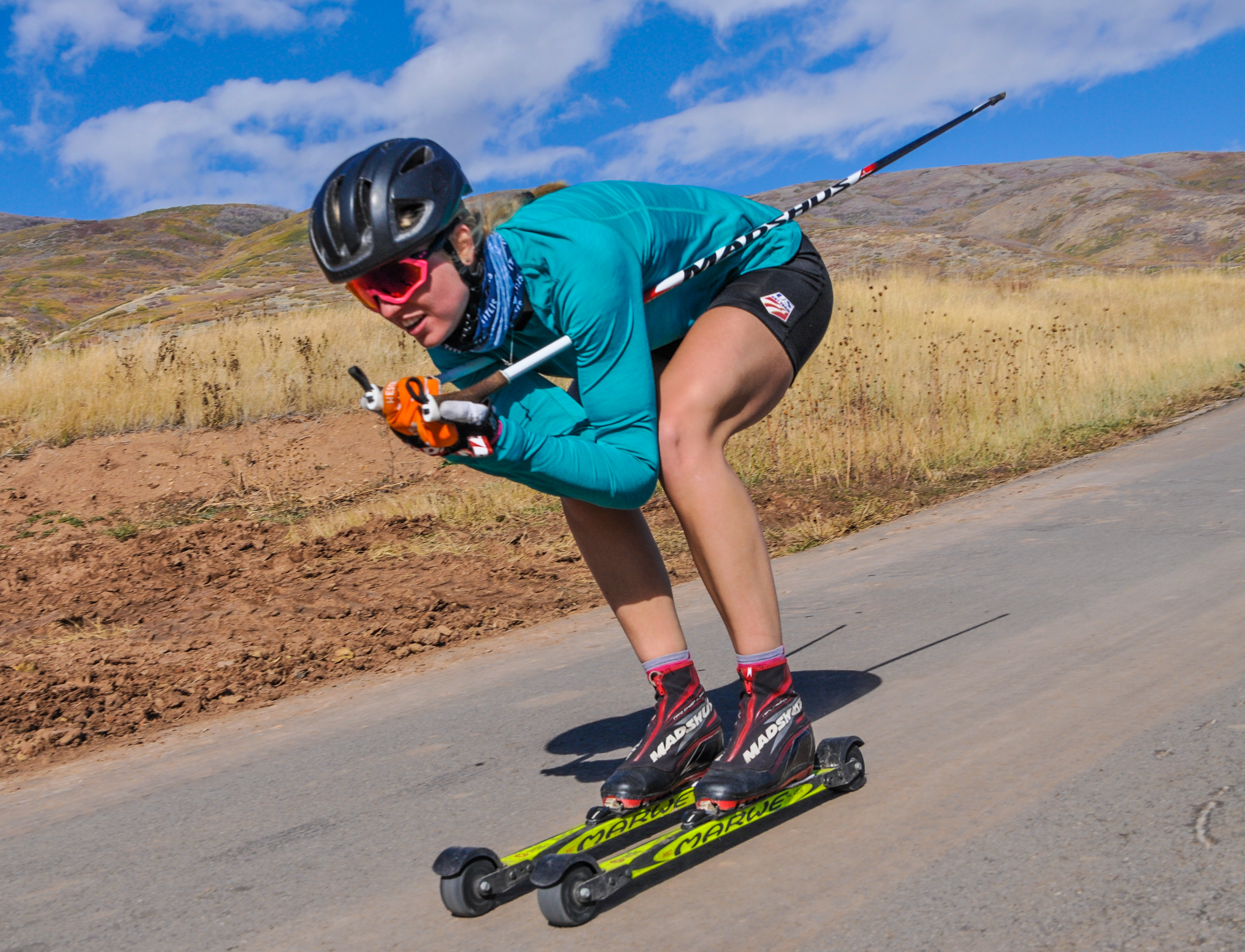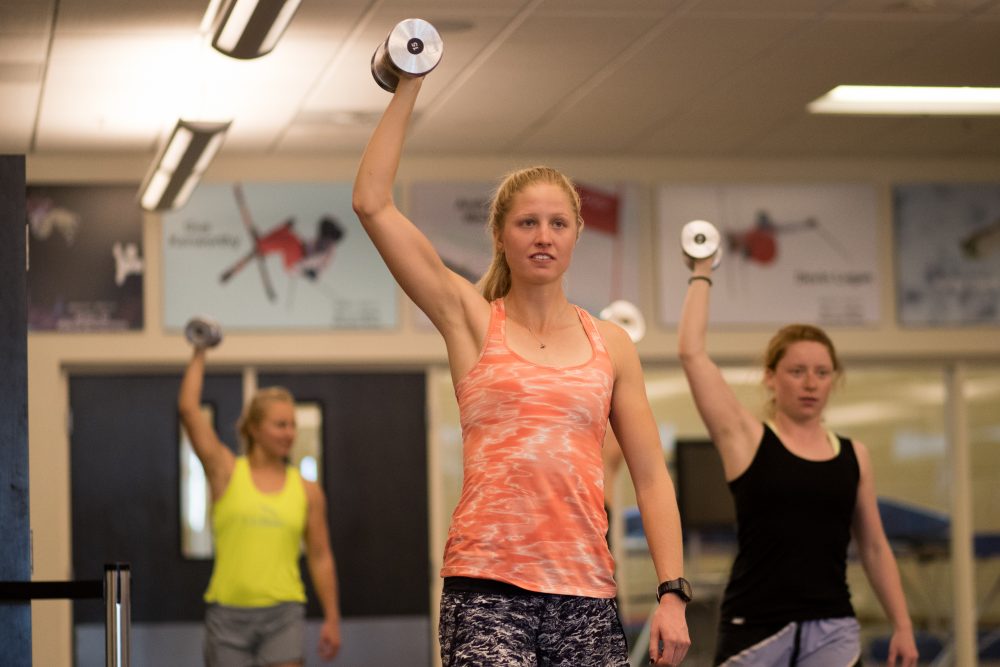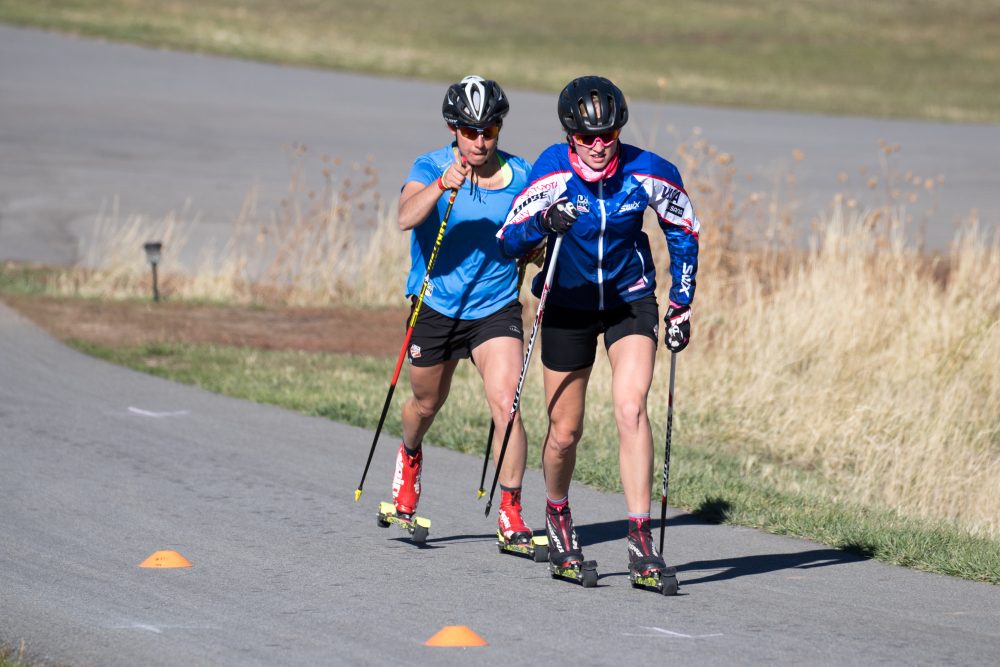
With the U.S. Ski Team’s final pre-season camp wrapping up on Oct. 22 in Park City, Utah, FasterSkier reached out to one of the newer additions to the USST’s D-Team, Hailey Swirbul, for a recap of her experience. (Read part 1 here.)
Born in Grand Junction, Colorado, the 20-year-old grew up skiing in the Rocky Mountain area with the Aspen Valley Ski and Snowboard Club. In 2016 she headed north to attend the University of Alaska Anchorage (UAA) for two years, before moving to Alaska Pacific University (APU) for her junior year.
While skiing for UAA, Swirbul qualified for NCAA’s twice, racing to a second and third in last season’s races held in Steamboat Springs, Colo. At the 2018 World Junior Championships in Goms, Switzerland, she came away with two individual medals, one silver and one bronze.
The script below is a firsthand account from Swirbul of what the Park City camp was like for her.
***
“The primary goal of virtually every U.S. Ski Team camp is to get together and push each other. That generally means camps have an intensity focus, and Park City was no different,” U.S. National Development team coach, Gus Kaeding, wrote in an email to Swirbul after the U.S. Ski Team (USST) training camp in Park City, Utah this October.
Along with intensity, the Park City USST training camp offers exposure to altitude for athletes who have been training at sea level, as well as access to the Center of Excellence (COE) and its resources, which includes medical work, sports psych, nutrition, and strength.
The first day of camp, the team woke early to squeeze in blood lab tests and body composition exams before a morning distance run and a max strength test. Blood tests like these have become part of an annual routine.
At least four times a year, USST athletes meet with the team nutritionist to monitor blood for deficiencies like iron ferritin, vitamin D, and electrolytes. By logging these results over time, athletes can create a blood profile. In tracking long and short-term changes, blood profiles may be used to explain and predict physical performance, both good and bad.

Along with blood tests, experts at the COE also catalog body composition measurements. This is done using pincers and measuring tape in order to evaluate the fat percentage and girth of the torso and limbs. Max strength tests are then used to track imbalances and changes to athletes’ bodies.
The USST strength coach, Tschana Schiller, spent time evaluating leg power or stability imbalances using single leg explosive jump examinations. Movements like these allow her to work with athletes on improving imbalances and power through an individualized strength plan.
After the first day, camp training turned to distance sessions for a few days. We completed a 2-hour-plus classic session up the Mirror Lake highway, and a flat high-speed skate threshold interval set.
The primary focus for athletes in Park City is to push one another in training and with that in mind, we turned to speed sessions. Since many athletes travel to Park City from a range of elevations — some came from sea level, others from 7,000 ft. — the first few days were spent adjusting to the altitude before executing the two speed sessions: a level 3/4 interval set, and two time trials intermixed with long distance sessions and strength. Gus Kaeding, the new U.S. D-Team coach, noted that U.S. Ski Team “camps [usually] have an intensity focus.”
The fourth day of camp brought a skate speed session with eighteen 15-second speeds on flat, steep uphill, and gradual downhill terrain on the Soldier Hollow (SoHo) rollerski track. The following day, our fifth of active training, we completed longer, natural intervals at SoHo.
The SoHo rollerski sessions were paired with a distance run or core strength circuit to round out the first two days of Park City intensity.
To the joy of many, but the inconvenience of others, snow fell in Park City and the surrounding mountains on our planned over distance day. Sunday’s long run was relocated to the Bonneville Shoreline Trail overlooking Salt Lake City.
Post-run, our afternoon was filled with presentations. One in particular was the L.L. Bean and Swix winter kit delivery, one of the many organizational, according to Kaeding, “nuts and bolts that come with forming a team.” A well-deserved recovery day followed.

After a rest day, the team returned to SoHo for another speed session–classic skiing this time. After one more day of double distance sessions, it was time to push the limits with two time trials: a skate sprint simulation and a classic distance individual start.
The skate sprint followed the “King’s Court” format with heats of four, where the last athlete in each heat moves down a heat, and the winner of each heat moves up (excluding heat one with the top four qualifiers). After four times around the course, a qualifier and three heats, the athletes returned to Park City to recover before an afternoon distance session.
With the first hard time trial effort out of the way, the athletes returned to SoHo for a 12-kilometer freestyle race for the women, a 16 k freestyle race for the men. Using the entirety of the paved roller ski track at SoHo, skiers completed three or four laps, which means three or four efforts up the infamous Hermod’s Hill. A “brutal time trial” as Jessie Diggins accurately captioned in an Instagram post.
As the Park City training camp came to an end with a four hour roller ski, it was obvious that the USST left camp knowing they did what they came there to do–push each other to find a new level of fitness and technique to get them one step closer to becoming the best cross-country ski nation in the world.



